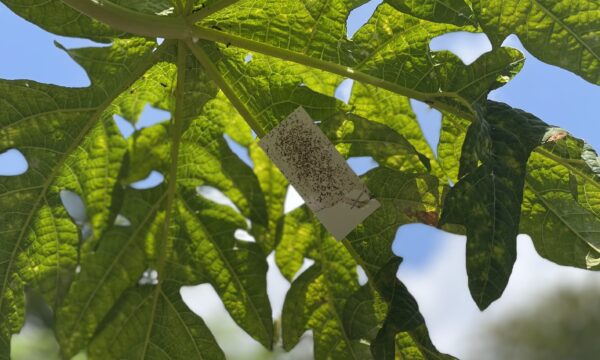With the Rio +20 conference occurring just last month, the world leaders have been encouraged to take notice of the global poverty and environmental concerns. Climate change was a key issue and with the population set to reach 9 billion by 2050, the impact this will have on food security is of paramount importance, especially with only a finite amount of land suitable for crop growth. The focus is therefore on finding ways to increase yields from the existing agricultural land.
Climate is complex and dynamic so determining its effects on the growth of crop plants is complicated. Some reports suggest that the increase in carbon dioxide from industry may offset some of the negative effects a changing climate will have by increasing the rate of photosynthesis. Despite this, in some areas the change in temperature and precipitation will certainly have a negative effect on the yield. This could have devastating impacts on the local people of these areas by reducing their food availability and affecting their livelihoods. This is what may be expected in Sub-Saharan Africa, one of the most vulnerable areas due to its high proportion (97%) of rainfed crops which rely heavily on weather conditions.
Elodie Blanc of The Massachusetts Institute of Technology found that climate change is likely to lead to reduced yields of three of the four most often grown crops in Sub-Saharan Africa. Depending on the climate change scenario used within the models, the reductions were found to be as high as 19% for maize, 38% for millet and as large as 47% for sorghum. Cassava, the fourth most common crop did not show a significant decrease when growth in changing climate was modelled.
Although there have been many reports on the direct effects that changing climatic conditions will have on crops, there is less evidence on the effect it will have on changing pest distribution and even less on the effect of this on yields.
A review published last year by Newton et al. discusses the indirect effects of climate on crop growth, including an altered pest and disease distribution. This will have implications on farming practices, which have to keep up with the changing pressures on crops.
Different areas, globally and regionally are expected to be affected differently by climate change and the yields of different species and therefore the solutions implemented will have to be specific to each area.
The first step is to gain enough data to predict the effects of climate change on different crop species. Sophisticated models will then be used to project what may happen in the future and test possible resolutions to the problem of global food insecurity.
Sources:
Newton, A. C., Johnson, S. N. and Gregory, P. J. 2011. Implications of climate change for diseases, crop yields and food security. Euphytica 179 (1) pp. 3-18. Available from: http://dx.doi.org/10.1007/s10681-011-0359-4
Blanc, E. 2012. The Impact of Climate Change on Crop Yields in Sub-Saharan Africa. American Journal of Climate Change 1 pp. 1-13. Available from: http://dx.doi.org/10.4236/ajcc.2012.11001
Related News & Blogs
Horizon scanning for climate-driven pest threats can prevent biodiversity loss
On International Day for Biological Diversity, CABI’s Dr MaryLucy Oronje looks at horizon scanning and pest preparedness – approaches that help prevent the spread of invasive species, a major threat to biodiversity. Horizon scanning for invasive pests…
22 May 2025





